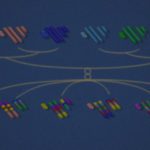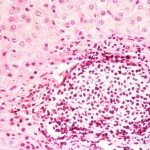Link to Pubmed [PMID] – 36876574
Link to HAL – pasteur-04272826
Link to DOI – 10.15252/embr.202256055
EMBO Reports, 2023, 24 (4), pp.e56055. ⟨10.15252/embr.202256055⟩
Bat sarbecovirus BANAL-236 is highly related to SARS-CoV-2 and infects human cells, albeit lacking the furin cleavage site in its spike protein. BANAL-236 replicates efficiently and pauci-symptomatically in humanized mice and in macaques, where its tropism is enteric, strongly differing from that of SARS-CoV-2. BANAL-236 infection leads to protection against superinfection by a virulent strain. We find no evidence of antibodies recognizing bat sarbecoviruses in populations in close contact with bats in which the virus was identified, indicating that such spillover infections, if they occur, are rare. Six passages in humanized mice or in human intestinal cells, mimicking putative early spillover events, select adaptive mutations without appearance of a furin cleavage site and no change in virulence. Therefore, acquisition of a furin site in the spike protein is likely a pre-spillover event that did not occur upon replication of a SARS-CoV-2-like bat virus in humans or other animals. Other hypotheses regarding the origin of the SARS-CoV-2 should therefore be evaluated, including the presence of sarbecoviruses carrying a spike with a furin cleavage site in bats.




















